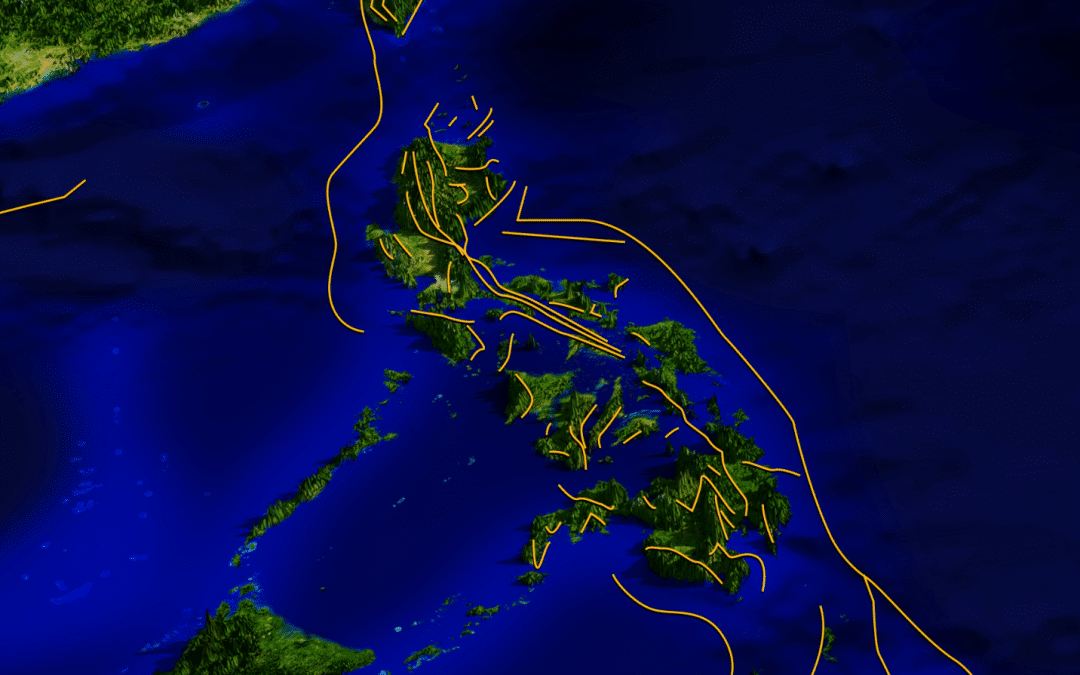Seismicity in the Philippines is primarily defined by its location on the Pacific “Ring of Fire,” a path along the Pacific Ocean characterized by frequent earthquakes and volcanic activity. This high level of seismic activity is due to the complex interactions among several tectonic plates surrounding the archipelago, including the Philippine Sea Plate, the Eurasian Plate, the Sunda Plate, and the Pacific Plate. Here are the key factors that define seismicity in the Philippines:
Subduction Zones: The Philippines is surrounded by multiple subduction zones where one tectonic plate is forced under another. These include the Manila Trench to the west, where the South China Sea Plate is subducting beneath the Philippine Mobile Belt, and the Philippine Trench to the east, where the Philippine Sea Plate subducts beneath the Celebes Sea.
Philippine Fault Zone: This is a major tectonic feature of the region, a strike-slip fault that runs the length of the archipelago. This fault zone is responsible for numerous earthquakes as it accommodates the motion between the Philippine Sea Plate and other local microplates.
Complex Plate Dynamics: The archipelago’s tectonic environment is characterized by complex plate dynamics, including rotation, subduction, and lateral fault movements. These interactions cause various seismic events, from minor tremors to devastating earthquakes.
Volcanic Activity: The subduction processes under the Philippines trigger earthquakes and fuel one of the world’s highest concentrations of active volcanoes. Volcanic earthquakes are frequent and add a layer of seismic risk.
Historical Seismicity: The Philippines has a history of frequent and sometimes catastrophic seismic events, such as the 1990 Luzon earthquake and the 2013 Bohol earthquake. These historical events help define the seismic hazards and are critical for planning and disaster mitigation.
Tsunami Risk: Given its extensive coastline and offshore seismic activity, the Philippines is also vulnerable to tsunamis, particularly undersea megathrust earthquakes.
Urban and Rural Exposure: The population’s distribution in densely populated urban areas and vulnerable rural communities increases the risk and potential impact of seismic events.
These factors make the Philippines a region with a high level of seismic hazard, requiring ongoing efforts in monitoring, preparedness, and public education to mitigate the impacts of earthquakes and related disasters.

